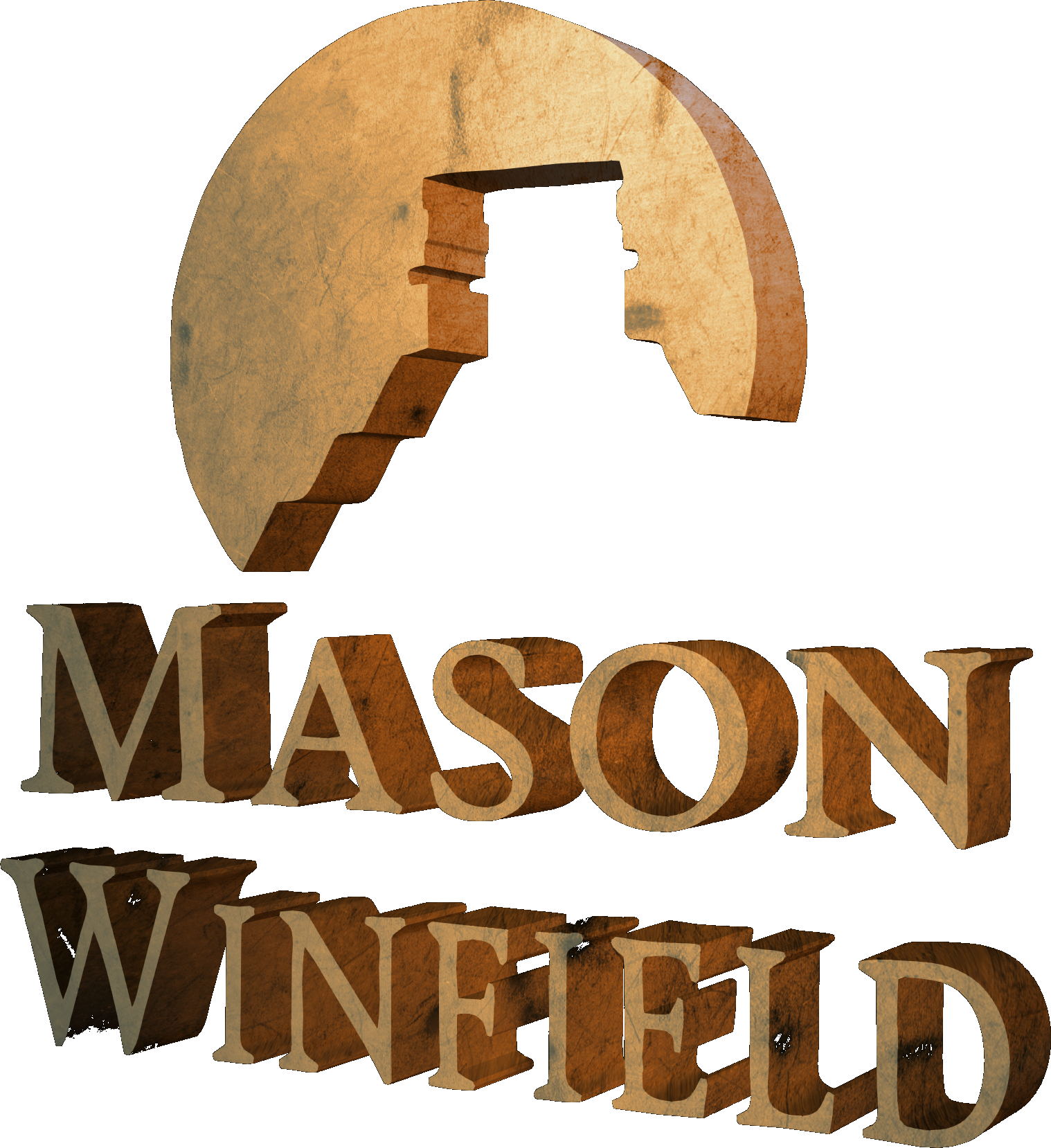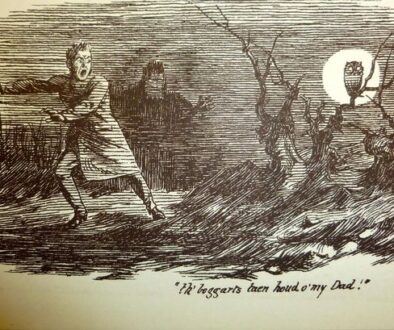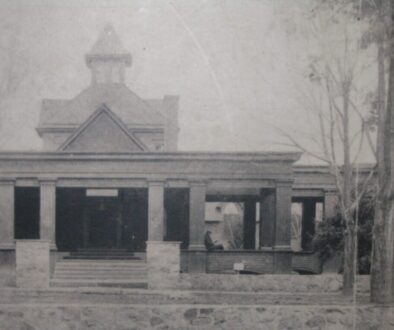The Elfin Ring
(A Reflection from December 2012)
1
In many parts of the world it’s been believed that we share the earth with natural presences often envisioned as small, magically powerful, humanlike beings. In legend, these Fairies/Little People have a circumstantial connection to the human dead and a deep interest in human children. Protectors of the natural world and its cycles, they get attached to special places in the landscape. They also give gifts, including enlightenment, to humans they favor.
I know of a number of spots across upstate New York that our Iroquois/Longhouse friends acknowledged as traditional “Little People Places.” Some of them – “Little Man Valley” near Palatine Bridge on Route 5 and several of the falls along the lower Genesee near Rochester – were so age-old and proverbial that even the whites knew about them and placed their names into the histories. From knowing the famous Little People Places you can learn to spot likely candidates that would have been known only to the local population. They’re always intricate, natural features that appear humanly-crafted: an apparent doorway in a shale cliff; tiny stairsteps in a waterfall; a mini-bathtub, a soap-dish-sized depression, in a flat rock in a creek; a “fairy ring” of moss or flowers.
In North America these features are regarded as haunts, favored earthly places for these alter-beings. They’re good places to see them. In Celtic countries, the larger ones are considered good places to join them. A step into the aura of one of them at the right time is a step out of your own world. Even today some of us undergo altered-state experience when we enter the spaces the ancients presumed were special to these Little People.
Before he enters a cemetery, a battlefield, an ancient monument, or any ground he recognizes as sacred, my mystical Algonquin friend Michael Bastine says a prayer. Usually he gets out his tobacco and gives tribute with the active smoke. He never enters that space until he has asked permission and senses that he is welcome, and he gives grace again as he leaves. I respect his customs, but it doesn’t always occur to me to follow them. Maybe it should.
2
Just short of thirteen years I’ve lived in a cottage behind a stone wall on the east side of the Knox Farm State Park, the former Knox-Goodyear Estate in East Aurora. That tenure has come to an end. Current owners New York State Parks are getting out of the landlord business, and I was one of the bumps in the shuffle. The experience of moving has kept me in a week-long mood.
Leaving the cottage is one thing. Never a sturdy building, it’s been run-down in the last few years, and I’ve put up with a lot to live there. It’s also been the ideal writers’ hut.
Weather broke over it from the south and west, and it made my bedroom at that corner feel like the prow of a ship forging into a wake, making for adventurous dreams. Storms shivered it as I lay, the house shuddering on its struts like a laughing human rocking on his ribs. Cloud-shadows had crossed my sleeping form through that broad west-facing window. Through the screens I’d heard the coyote pups practicing their kiddie-howls on the first warm night of every spring.
Reflections came to me all last week as I moved the light items and watched a house stage by stage lose what had made it a home. It was still steeped with memories. I could hear the echoes of friends’ voices in the air and dog-nails and cats’ paws on the wooden floors. I could come to any window and remember a mood or revelation I’d had looking from it. I could face any wall in any room and sense much the same thing. That’s the only space I’ve ever occupied in which I could never feel alone. I could have been the only living soul there on Christmas Day and felt like I was at a party.
Even the fireplace held its reminiscences. One late afternoon ten years before I’d come back from the hospital, made a fire, and sat gazing into it like it was a TV an hour after my mother had crossed into Spirit. Sorting papers last week, I looked into the cold, dusty firebox and heard again the heartening crackle that had accompanied the awakening that I was both free and completely on my own.
Leaving the domain of the Park – having felt like a citizen of it only to become a tourist again – was another part of the story. For those who have never seen it, the former Knox Estate is more pastoral than it is rugged. It’s six hundred plus acres of woods, fields, trails, pastures, ponds, barns, and English manor-style buildings, all bounded by a couple of roads. You could have filmed Tom Jones entirely inside that rural block. I lived, of course, on its eastern fringe, tucked into its environs behind a cobblestone wall that always seemed symbolic to me. As tidy as that Park might seem during the day, it was moody, atmospheric, and mysterious at night. It never ceased to inspire me. All told, there was simply something about it that I may never summarize that made many people want to be of it. As a friend, a former tenant, said to me once, “No one leaves there without wanting to stay.”
With my symbolic detachment from all that in mind, I took a run on the Park late on the afternoon of December 9, 2012. It was a Sunday, and that night would be my last there. The movers were coming in the morning for the bed and other items that wouldn’t fit into my Subaru.
The day had been moist and grey, and it would be nearly dark at the end of my run. The sky had thinned to the southwest, though, and the light would be good most of the way.
I started out reflecting again on my conspicuous regret at leaving that simple, rough cottage. It defied logic. I was moving to a bigger, much more comfortable house in East Aurora village only two miles away. I would miss living on the Park – no more tearing out my back yard into landscape – but Knox Farm is a New York State Park, and anyone can go there.
I realized as I ran that the Park’s impact on me could be affected by its easy blend of natural and human factors. This made it what the folklorists call a liminality – a threshold, a spellbinding midway state, a meeting-point of different conditions or environments. Graveyards – meeting-grounds of living and dead – are liminalities. Pools can be envisioned as liminalities, midpoints between earth and water. The liminal could even be found in points of time. At dawns and twilights, for instance, the old Celts always anticipated manifestations of the Other World or magical displays in this one. Solstices and equinoxes were such points in the year.
There were other reasons to defy regret, at least about moving off the physical space of the Park. I’ve run, skied, hiked, walked, or roller-skied all over it in every season at virtually all times of day or night. I’ve made innumerable circuits of the roads and trails. What was there to do or learn there that I hadn’t done or learned already? Still, that afternoon almost everything looked new. It felt like I had returned after a spell of years.
I ran by the pond just south of the Knox-Goodyear house, noting the leaves brooding on the bottom near the grassy bank. To this pond a woman friend and I had brought our dog on an August dawn, the last day of his life, so those images of having lived might be with him as he left for the Spirit Lands. I remembered that mournful daybreak, its low sun already searing. One of my pangs about leaving that cottage is the feeling that, if that animal-friend comes back in Spirit to find us at what he considers his last home, no one will be there to greet him.
3
The last leg of my route took me to the crown of the Park, the wooded area an enlightened friend used to call “the Fairy forest.” Just a grove, it does have an ethereal feel to it that belies its size. As I took the unpaved road into it from the west, something strange caught my eye, a horizontal wreath among the trees floating four feet off the ground. The material that made it was so light-colored that it was nearly luminous in the dim surroundings. It looked like one of the trees was sporting a glowing waist-belt like the big ring of Jupiter – or even a twenty-foot tutu.
The thought of a tree in a ballerina’s platter-like little skirt reminded me of the animated vegetables and kitchen ware in some of Disney’s productions, and it made me laugh out loud. I slowed, left the trail, and walked toward the spot of my focus.
From within the trees my impression of the floating ring fell completely apart. I moved toward the light material that had composed it, which turned out to be a handful of slender branches on different boles, still bearing their tawny leaves. They stemmed curiously sideways at almost identical heights but pointed in very different directions.
Even in a tame December it’s remarkable to find leaves on any Niagara branch. To find several laden boughs on different trees close together was uncanny. These, however, made no sort of arc. What had ever given me the impression of a single form? Was I seeing things?
I backed away and moved about. I saw nothing resembling a geometric shape. I circled the spot forty feet out. Still nothing.
I went back to the trail and retraced my steps, all the time eyeing the spot at which the tawny hula hoop had appeared. Not until I came to my original vantage on the trail and stopped in the exact spot did it fall again into view, and even a foot or two in any direction would cause it to fragment. I would never have marked it at all if I hadn’t been looking to it at the precise moment. The whole experience was surreal. I went back to study the spot again from within it.
At one point I felt a tingle as though I had entered a weak electric field, which surprised me. The nearest power line was a quarter mile away. It wasn’t just a tingling I was feeling; it was also a tense stillness like being within the nexus of competing forces like they say exists at the eye of the hurricane. I could almost hear a buzz. The only other time I had a feeling like that in an outdoor space was when I stood in the eye of the White Horse of Uffington, a gigantic chalk-hill monument in Britain’s Berkshire Downs. I looked around me.
I was in one of those rare natural rings in the woods. I had been drawn to it by the illusory wreath. And this was no optical illusion. This was a nearly perfect ring twenty feet in diameter formed of grown trees. Within it, no saplings grew, and no branches rested. Only grey and weary grass and a few tattered leaves were inside it. It was as if a long-lived ranger – or a forest-warden like Tolkien’s Treebeard – had planted a dozen seeds in a ring, kept its center clear through the decades, and tended it to the day. For thirteen years I’d run or skied right by this natural sanctuary, often several times in the same afternoon. How had I never spotted it? Thirteen years I’d lived on the piece of land that held it and not until my last day as a tenant did I find myself at its dead center. It could have been a pastoral temple, a sylvan fane I could have walked to. It could have been a place of meditation and communion all that time. It was curious. Ironic. Maddening.
Then I got it. I rested, picked words, and spoke to the air in the center of the ring.
“Elders, I should have recognized all this domain as your space. I should have asked before coming into it. I thank you for letting me learn what I have from it. I bless you as I leave.”




